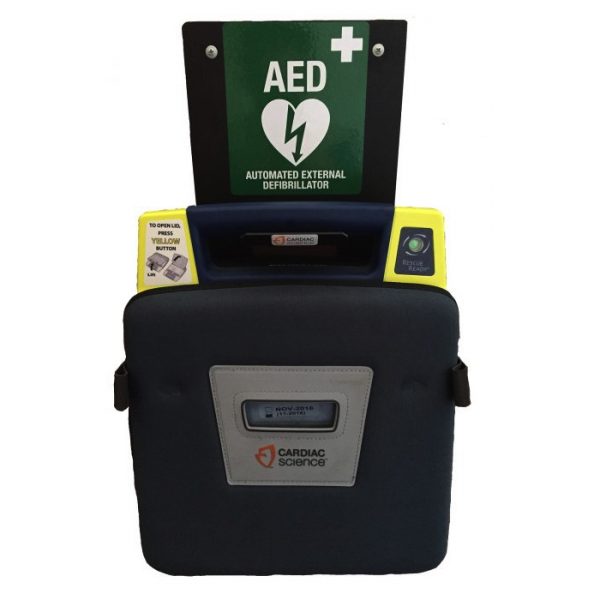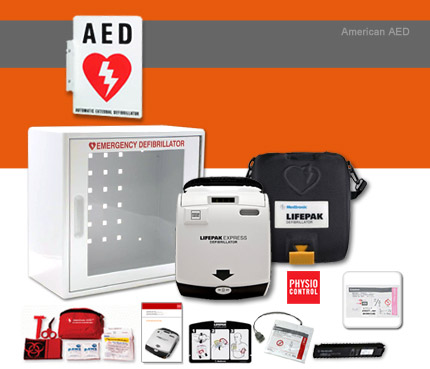
SCA results in death if not treated immediately. However, SCA may occur independently from a heart attack and without warning signs. Heart attacks are serious and sometimes will lead to SCA.

Heart attack victims usually (but not always) experience chest pain and usually remain conscious. A heart attack is a condition in which the blood supply to the heart muscle is suddenly blocked, resulting in the death of the heart muscle. This is usually caused by an abnormal heart rhythm called ventricular fibrillation (VF). Sudden cardiac arrest (SCA) simply means that the heart unexpectedly and abruptly stops beating.

Most AEDs are similar in appearance, varying in color and design.Public Access Defibrillation and AEDs: Frequently Asked Questions What is sudden cardiac arrest? See the illustration below of a Red Cross Training Device, modeled to look and behave like an AED without emitting any shock. There are many different brands of AEDs, but the same basic steps apply to all of them.

With a few hours of training, anyone can learn to operate an AED safely. The AED uses voice prompts, lights and text messages to tell the rescuer the steps to take.ĪEDs are very accurate and easy to use. And it can advise the rescuer when a shock is needed. It can recognize a rhythm that requires a shock. Through the victim's chest wall through adhesive electrode pads.Īn AED can check a person's heart rhythm. AEDs advise a shock only to ventricularįibrillation and fast ventricular tachycardia. The computer analyzes the heart rhythm and advises the Rhythm through adhesive electrodes (some AED models require you to press anĪNALYZE button). But having an AED installed at your location can allow on-site trained responders, or nearby emergency responders, deliver potentially life-saving defibrillation therapy quickly and effectively.Ī microprocessor inside the defibrillator interprets (analyzes) the victim's heart When a victim experiences sudden cardiac arrest, with a shockable rhythm, every minute counts every minute a victim goes without defibrillation, the chances for survival decrease by 7%-10%. Having an accessible Automated External Defibrillator (AED) used to quickly deliver a life-saving shock often means the difference between life and death. Sudden cardiac arrest can strike anyone, so it is extremely important to be prepared to respond quickly to sudden cardiac arrest. Sudden cardiac arrest is a major public health problem and affects an estimated 500,000 people every year. Today, defibrillators are the only proven way to resuscitate a person who has had a cardiac arrest and is still in persistent ventricular fibrillation or ventricular tachycardia at the arrival of rescuers.
#AED STANDS FOR PORTABLE#
In the 1960s, portable defibrillators were introduced for use in ambulances. Beck first used the technique of defibrillation successfully on a 14 year old boy who was being operated on for a congenital chest defect. The first use of a defibrillator on a human was in 1947 by Claude Beck, professor of surgery at Case Western Reserve University. They discovered that small electric shocks could induce ventricular fibrillation. Prompts guide the user through the process.ĭefibrillation was first demonstrated in 1899 by Prevost and Batelli, two physiologists from University of Geneva, Switzerland. Built-in computers assess the patient's heart rhythm, judge whetherĭefibrillation is needed, and then administer a shock if needed. Philadelphia is the first city for the MyHeartMap Challenge but will expand to other cities and then the entire US!ĪED stands for automated external defibrillator.Īn AED is a device used to administer an electric shock through the chest wall to

Join this initiative for a chance to win monetary prizes and to help save lives!


 0 kommentar(er)
0 kommentar(er)
